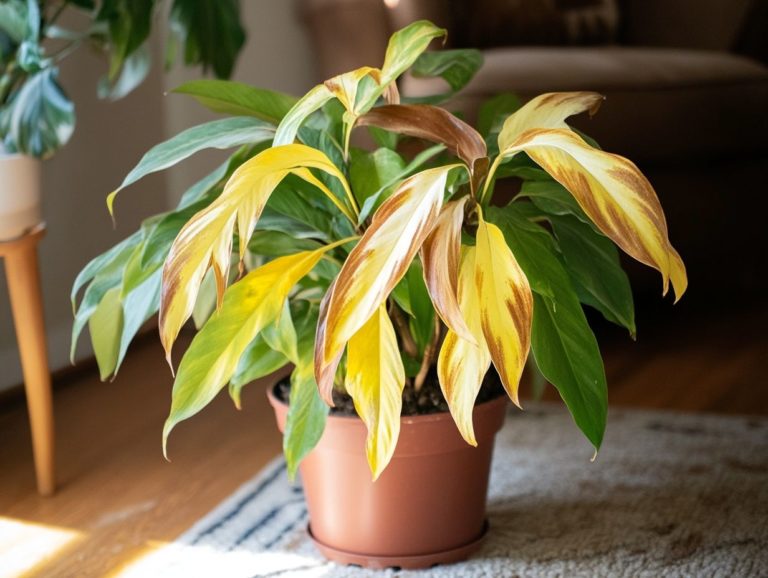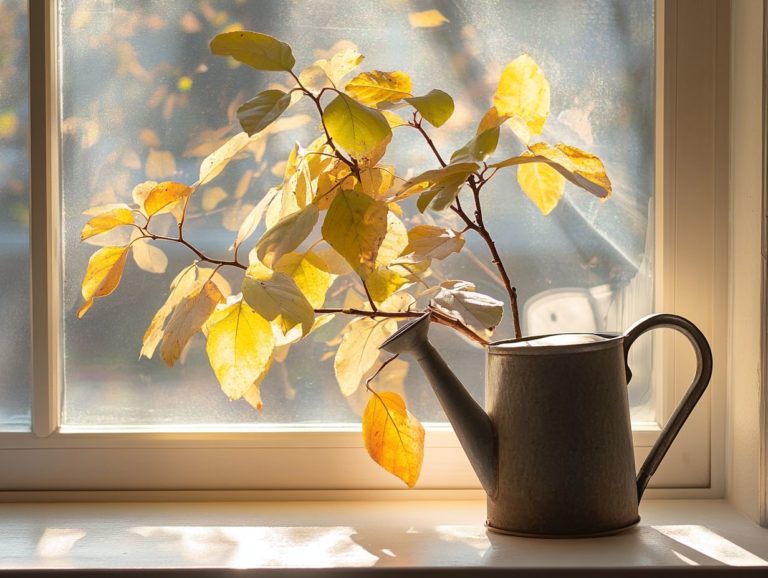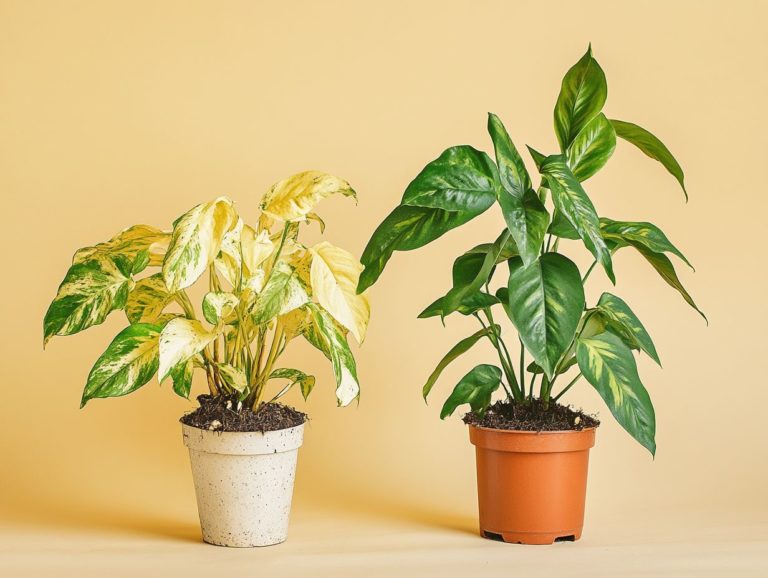What to Do When Your Plant Is Leggy
Leggy plants can often frustrate plant enthusiasts, indicating that something in their care may be amiss. This article delves into the underlying causes of legginess, equipping you with the knowledge to identify the telltale signs across various plant types.
To rejuvenate your leggy greenery, effective strategies such as pruning, training, and repotting can work wonders. You ll also learn proactive measures to prevent this issue from occurring, ensuring your plants flourish in the optimal conditions they deserve, particularly through proper plant care.
Contents
Key Takeaways:
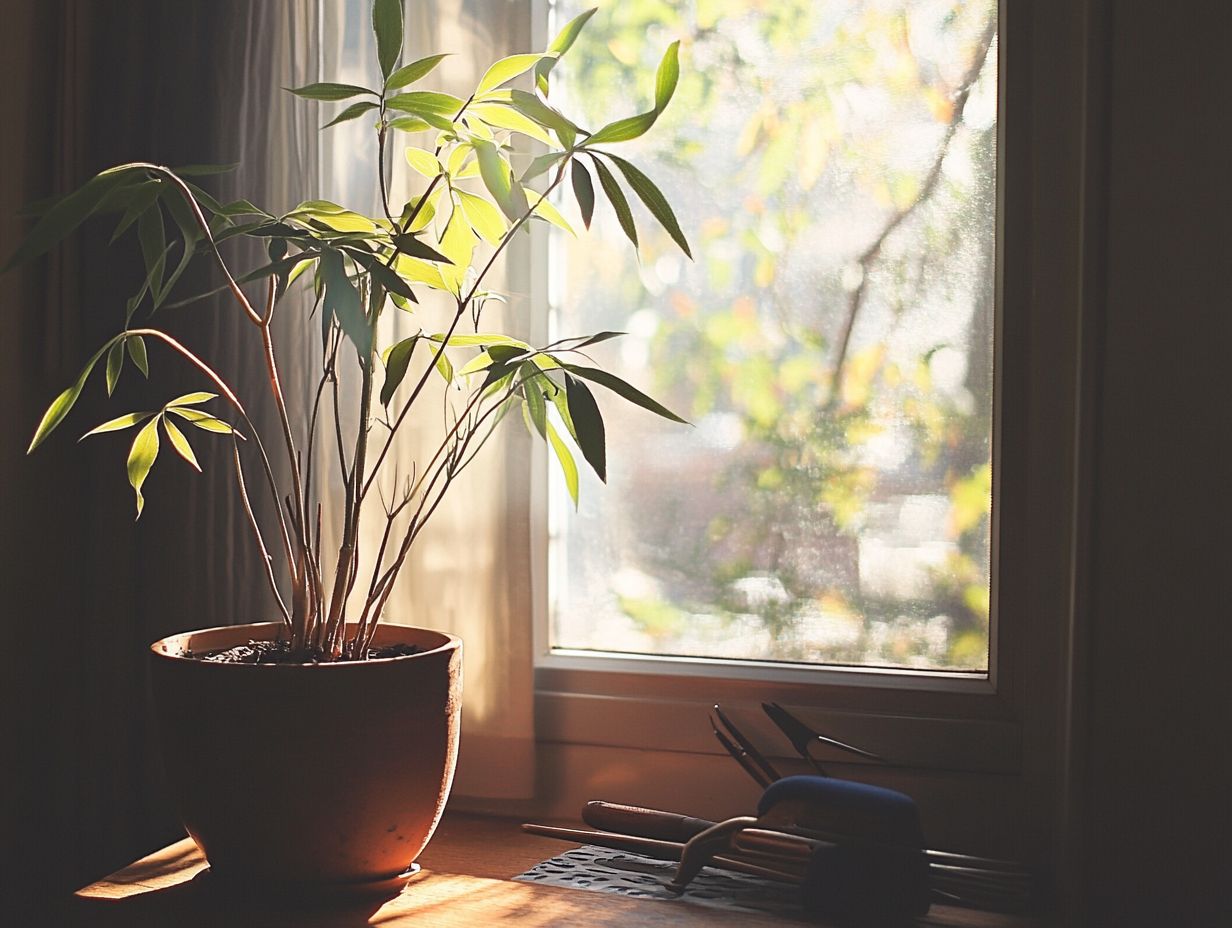
- Regular pruning and training can help prevent leggy growth in plants and promote healthier growth.
- Transplanting or repotting a leggy plant can help improve its overall health and appearance.
- Proper care and maintenance, such as providing adequate lighting and choosing the right location, can help prevent leggy plants from occurring in the first place.
Understanding Leggy Plants
Understanding leggy plants is essential for anyone passionate about nurturing a vibrant indoor garden. When you notice legginess in your houseplants, it often signals insufficient light or inadequate care. This phenomenon is where plants stretch tall and thin in search of light.
Factors such as light requirements, watering habits, and environmental conditions are critical in preventing this unwelcome growth. By identifying the signs and underlying causes of leggy plants, you can quickly adopt proven strategies to encourage fuller growth and enhance the overall health of your botanical companions.
What Causes Legginess?
Legginess in your plants can stem from several factors, with inadequate light exposure being the primary culprit. When light is lacking, plants often develop weak stems and elongated growth as they reach for a more favorable light source.
In low light conditions, you might notice them growing taller as they seek more illumination. Even in medium light levels, if their needs aren t fully met, stretching can still occur. Conversely, high light conditions typically encourage shorter, sturdier growth, but finding the right balance is crucial.
Additionally, a lack of essential nutrients particularly nitrogen can significantly impact their health. Plants deprived of nitrogen may stretch as they try to maximize their leaf surface area for photosynthesis. Furthermore, pest infestations and diseases can sap a plant’s vitality, exacerbating legginess by hindering overall growth and energy levels.
By addressing these issues holistically, you can foster a healthier, more robust plant.
Signs of a Leggy Plant
Identifying leggy plants requires you to observe certain signs that reveal their poor health or growth patterns. Look for key indicators such as elongated stems, sparse foliage, and a noticeable inclination toward light sources. This can often result in leaf drop or the development of weak stems, indicating the need for better watering strategies.
Identifying Legginess in Different Types of Plants
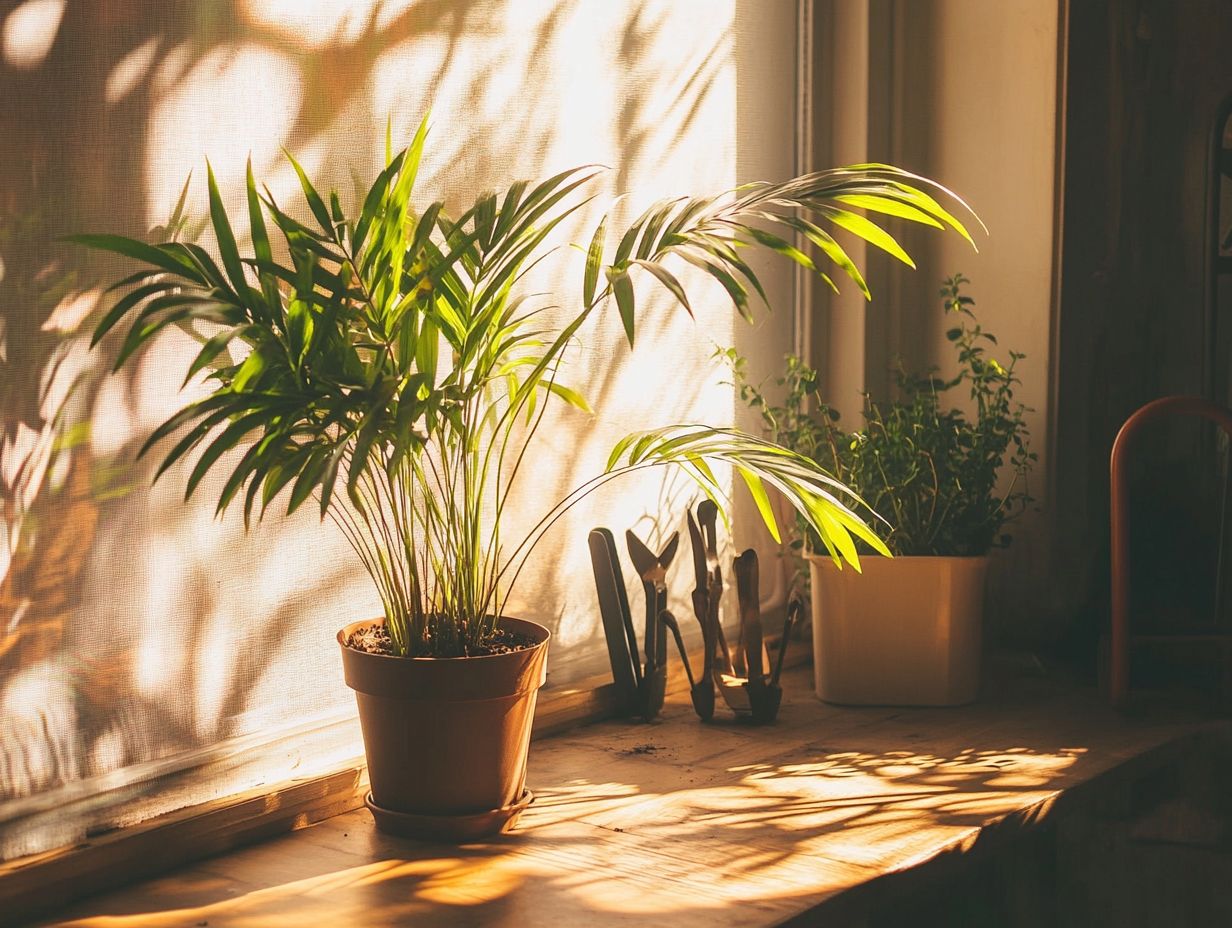
Identifying legginess in your plants can vary significantly based on the species you re tending to. For instance, houseplants like Pothos and Geranium each exhibit unique characteristics that signify unhealthy growth.
Leggy growth typically arises from insufficient light, prompting your plants to stretch toward any available light source. Take Cacti, for example; they might elongate in their quest for sunlight, resulting in tall, sparse forms. Meanwhile, Peace Lilies can develop elongated stems and fewer blooms, a clear indication that they re not getting enough light.
Similarly, the ZZ Plant may show weak, elongated stems that detract from its otherwise robust appearance. To address these concerns, seasonal pruning is key; it not only encourages bushier growth but also ensures your plants remain healthy and vibrant.
By regularly trimming back that excessive leggy growth, you ll promote overall vitality and enhance the aesthetic appeal of your green companions.
Start your journey to healthier plants today!
Transform Your Leggy Plants
Fixing a leggy plant requires a thoughtful blend of strategic pruning techniques and adjustments to your care practices. This includes adjusting watering and relocating your plant to a more suitable environment.
Regularly pruning your plant encourages bushier growth. Fine-tuning its watering and lighting conditions ensures it thrives in optimal health.
Pruning and Training Techniques
Pruning and training techniques are vital for transforming your leggy plants into bushier, healthier specimens. By cutting back weak stems, you can stimulate new growth that enhances their overall vitality and visual appeal.
Implementing seasonal pruning strategies, such as cutting back at specific times of the year, encourages denser foliage and robust branching. For example, pruning in late winter or early spring can invigorate growth in many species, making them more resilient.
Training techniques, such as tying or staking, support your plants and promote an upright structure, which is especially important for those that tend to sprawl. By ensuring your plants are well-supported and properly pruned, you can cultivate a flourishing garden landscape that thrives through every season.
Transplanting or Repotting
Transplanting or repotting your leggy plants can work wonders for their health and vitality. This practice tackles overcrowded roots and boosts your plant’s health, enabling them to retain moisture better and absorb nutrients more effectively with the right houseplant fertilizer.
For the best results, choose a new pot with sufficient drainage holes to prevent waterlogging. Excess moisture can lead to root rot, and that s a scenario you want to avoid.
Selecting a soil that strikes a balance between organic matter, which helps retain moisture and nutrients, and aeration is key to fostering robust root systems. When you re transplanting, consider applying a suitable houseplant fertilizer to support recovery by supplying essential nutrients that may be lacking in the current soil.
Manage moisture properly during the transition. This creates a nurturing environment for your plants to thrive, enhancing their overall foliage.
Preventing Leggy Plants
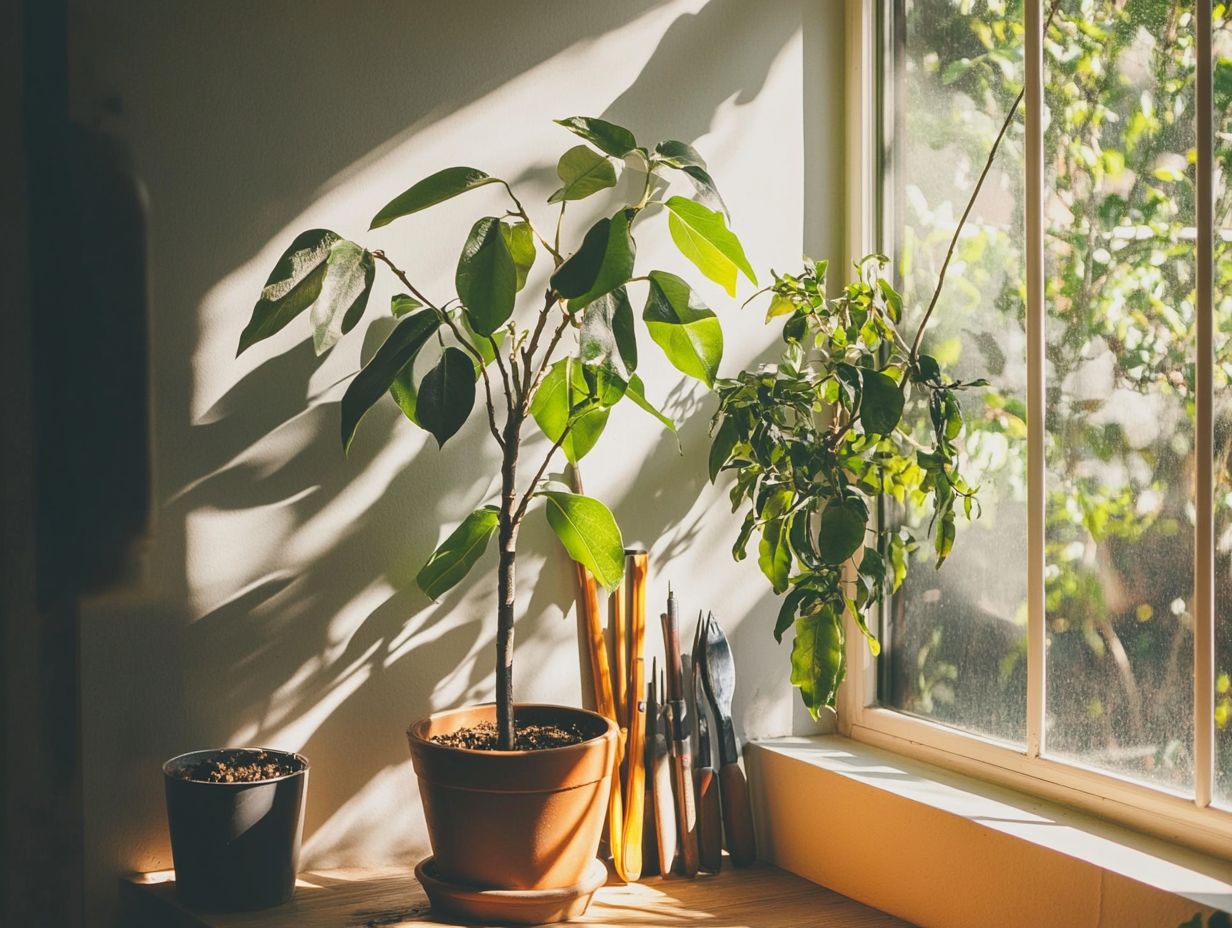
You can easily prevent leggy plants by implementing effective care and maintenance strategies that focus on optimizing light exposure, refining your watering practices, and enhancing overall plant health. This includes understanding their light needs.
Proper Care and Maintenance
Proper care and maintenance of houseplants are essential for promoting healthy growth and preventing legginess. Pay close attention to their specific light needs and nutrient requirements.
Different plants have individual light preferences, from low-light tropical varieties to sun-loving succulents. By understanding these needs, you can position your plants effectively, ensuring each one receives the ideal amount of sunlight for photosynthesis.
Don’t underestimate the power of nitrogen-rich fertilizers; they are crucial for promoting lush foliage and overall health. Techniques like rotating your plants for even light exposure and regularly checking soil nutrient levels can significantly boost their resilience, fostering vibrant growth and minimizing stress-related issues.
Start applying these tips today and watch your plants flourish!
Choosing the Right Location and Lighting
Choosing the right location and lighting for your houseplants is crucial to prevent leggy plants. Whether your plants thrive in low light or high light conditions matters a lot.
Each plant has specific needs. Some flourish under bright, direct sunlight, while others prefer dappled shade or even complete darkness.
Observe how natural light moves through your home during the day. This helps you identify the best spots for your plants.
South-facing windows usually provide the most light. In contrast, north-facing windows offer softer, cooler illumination.
If natural light is limited, consider using artificial grow lights. They can brighten those darker corners effectively.
Proper plant placement boosts their growth and enhances their vibrant appearance. This creates a lush, inviting retreat in your living space.
Frequently Asked Questions
Is Your Plant Looking Stretchy? Here’s What to Do!
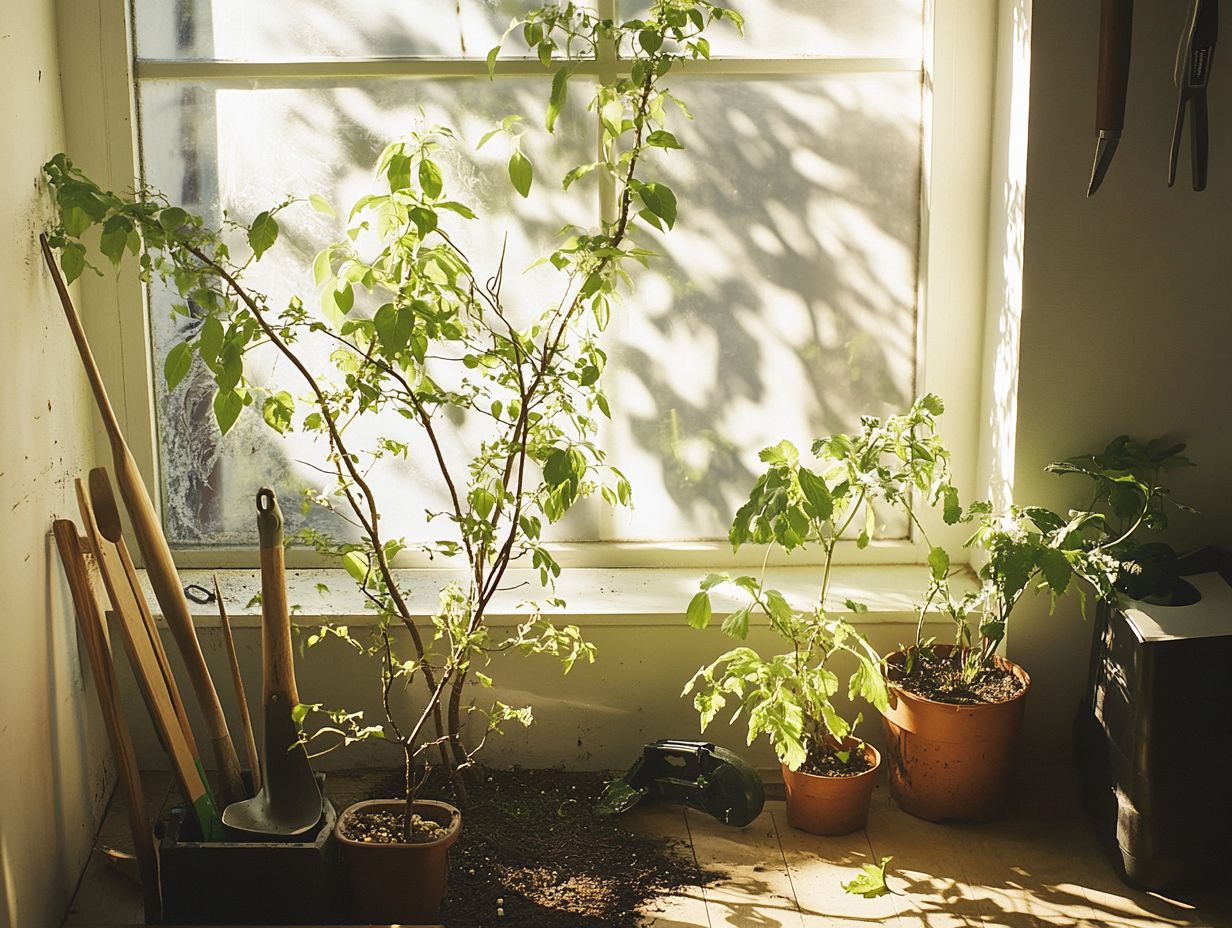
If your plant is tall and weak with sparse leaves, it is considered leggy. This can happen due to insufficient sunlight or improper watering.
How Can I Prevent My Plants from Becoming Leggy?
Ensure your plants get enough light and space. Rotate them regularly to promote even growth and avoid overcrowding.
Can I Save a Leggy Plant?
You can rescue a leggy plant with some care. Prune yellow or dead leaves and stake the stem to support it.
Why Is My Plant Becoming Leggy Despite Enough Light?
Sometimes, a plant may become leggy due to nutrient deficiencies. Adding houseplant fertilizer or repotting can help.
Should I Cut Off the Leggy Parts of My Plant?
If only a few branches are leggy, prune them to encourage bushier growth. For an entirely leggy plant, consider repotting.
How Can I Prevent My Newly Planted Seedlings from Becoming Leggy?
New seedlings can become leggy without enough light. Ensure they get sufficient light or use grow lights to help them thrive.
Ready to nurture your plants? Start today with these tips!


